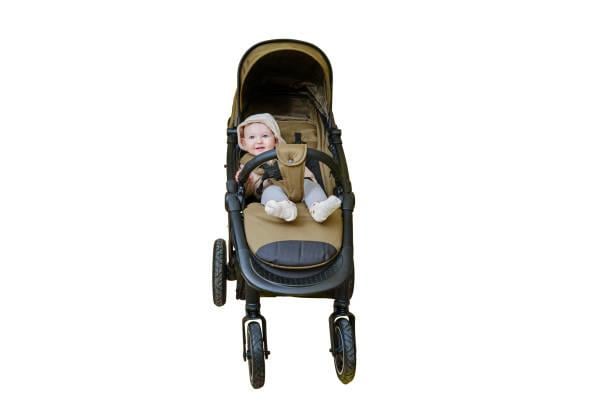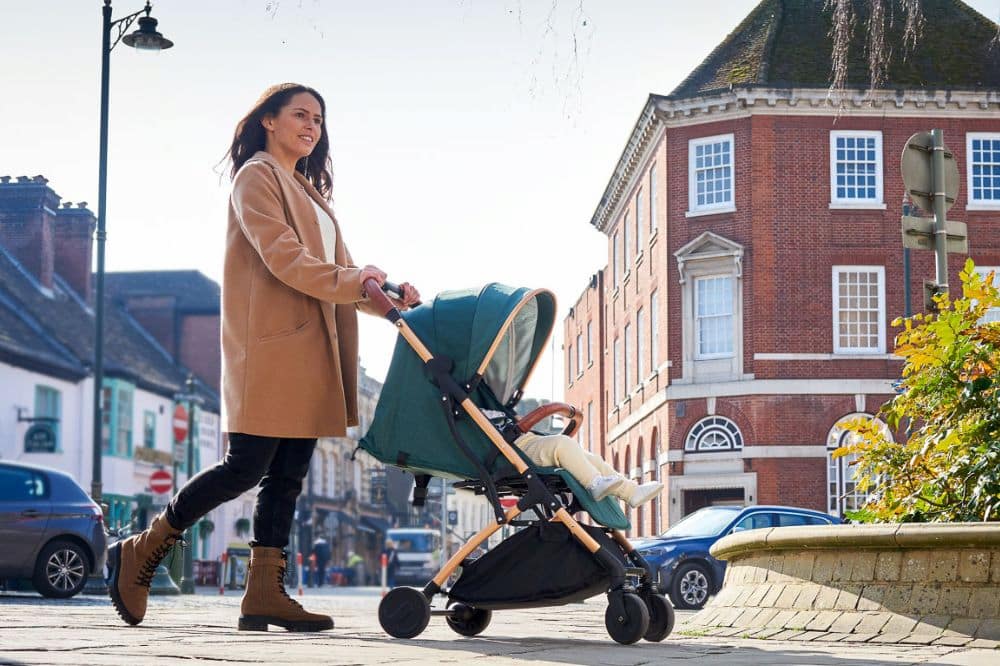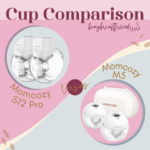Babies bring joy and a lot of questions. One common question is about stroller orientation.
When can a baby face forward in a stroller? Typically, it’s safe when they can sit up and hold their head steady. This usually happens around six months old. Parents often wonder about the right time for this transition. Facing forward lets babies explore the world more.
It can make outings exciting for both the baby and parents. But safety is a top concern. A baby’s neck and back need to be strong enough for this change. Understanding the signs of readiness is crucial. The correct timing ensures comfort and safety for your little one. In this blog, we’ll explore the factors to consider for this important milestone.
Age Considerations
Babies can face forward in strollers once they can sit up unassisted, usually around six months old. This switch provides a broader view, enhancing their curiosity and engagement with the surroundings. Parents should ensure the stroller offers proper support and safety for their developing child.
When considering when your baby can face forward in a stroller, it’s important to think about age. You want to ensure your little one is ready for this change. While your baby is growing fast, it’s not just about age; it’s about their readiness and comfort.Developmental Milestones
Your baby’s development is key in deciding when they can face forward. Around six months, many babies develop strong neck and head control. This is crucial for safely sitting forward in a stroller. If your baby can sit up unassisted, they might be ready.However, every baby grows at their own pace. Some might reach these milestones earlier, others later. Keep an eye on how your baby is progressing. Are they curious about the world? Are they trying to sit up more often? These signs can help guide your decision.Recommended Age
Most experts suggest waiting until your baby is at least six months old before facing them forward in a stroller. This recommendation stems from the need for adequate neck strength and head control. By this age, babies are usually eager to explore their surroundings.But remember, every child is unique. Your friend’s baby might have faced forward sooner, but that doesn’t mean yours should. Check with your pediatrician if you’re unsure. They can offer insights tailored to your baby’s growth.As a parent, you know your baby best. Trust your instincts and observe their behavior. Are they reaching for toys and engaging with their environment? These are cues that they might be ready.Is your baby comfortable and happy facing forward? Or do they seem overwhelmed? These observations can offer guidance and reassurance.
Credit: www.pramglam.com
Benefits Of Rear-facing
Choosing the right position in a stroller is crucial for your baby’s safety. Rear-facing strollers offer many benefits that enhance the overall experience. They provide improved safety and comfort for your little one. Let’s explore why rear-facing is often the best choice.
Enhanced Safety
Rear-facing strollers are safer for babies. The seat supports their head and neck better. In case of sudden stops, the impact is lessened. This position reduces the risk of injuries. Parents can also easily observe their baby’s well-being.
Comfort And Support
Rear-facing strollers offer greater comfort and support. Babies have better head and spine alignment. This position allows restful sleep without strain. It helps reduce the risk of discomfort from uneven surfaces. The padded seats provide cozy support.
Transitioning To Forward-facing
Babies can face forward in a stroller when they are about 6 months old. This is when they can sit up with little support. Make sure your stroller has good support for their head and neck. Safety comes first.
Transitioning your baby to a forward-facing position in their stroller is an exciting milestone. It opens up a world of exploration and interaction for your little one. Suddenly, they can see the world just as you do. But how do you know when they’re ready? And what’s the best way to make the switch?###Signs Of Readiness
You might notice your baby is becoming more curious about their surroundings. They might try to twist and turn in their stroller to catch glimpses of the world beyond.Look for physical signs like improved neck and head control. Your baby should be able to sit up without support. If they can, they’re likely ready for the transition.Behavioral cues are also important. If your baby seems fussier or bored when rear-facing, it might be time for a change. Have you seen them craning their neck to see where they’re headed? This eagerness can be a clear sign of readiness.###Gradual Introduction
Start by letting your baby face forward during short walks. Test it out in familiar places like your backyard or local park. This keeps things comfortable and less overwhelming.Mix up the positions. Allow your baby to face you during parts of your walk. This helps them transition gradually and ensures they can still see your reassuring face.Try introducing engaging activities while forward-facing. Point out interesting sights and sounds. Ask questions like, “Can you see the doggy?” This interaction can make the experience more enjoyable and educational.Transitioning to forward-facing is not just about the physical change. It’s about fostering curiosity and interaction. How will you make this exciting journey a memorable one for your baby?Choosing The Right Stroller
Babies can face forward in a stroller usually around 6 months old. At this age, they have stronger neck muscles. Ensuring safety and comfort, choose a stroller that supports their development.
Choosing the right stroller for your baby can feel like navigating a maze. With so many options out there, it’s essential to focus on what matters most: safety, comfort, and adaptability. Ensuring your baby can face forward safely when they’re ready is just one piece of the puzzle. Here’s how you can make an informed decision when selecting the perfect stroller.###Safety Features
The first thing you want to check in a stroller is the safety features. Look for a sturdy frame that doesn’t wobble when you push it. A five-point harness is crucial to keep your baby secure and prevent them from slipping out.Brakes are another vital feature. Ensure they are easy to engage and release. Imagine you’re on a hill, and you need to stop quickly—those brakes better work like a charm. Always inspect the stroller for recalls or safety alerts to protect your little one.###Adjustable Options
A stroller with adjustable options can grow with your baby. Look for adjustable seat positions so your baby can lie flat when they’re newborn and sit up as they grow. This flexibility means you won’t need to buy a new stroller every few months.Handlebars that adjust to different heights are a blessing, especially if you and your partner vary in height. It’s all about making the strolls comfortable for everyone involved. Check for adjustable footrests too, giving your baby a comfortable ride as they get taller.Choosing a stroller that fits your lifestyle makes all the difference. Whether you’re a city dweller needing a compact design or an adventurer looking for a robust build, think about where and how you’ll use it. What stroller features do you find indispensable? Your choice today impacts your baby’s comfort and your convenience tomorrow.Safety Precautions
Babies can face forward in a stroller once they reach six months and can sit independently. It’s crucial to ensure the stroller offers good support and protection, including a secure harness. Always check that the stroller is stable and suitable for your baby’s weight and height.
Ensuring your baby is safe when transitioning to a forward-facing stroller is crucial. As exciting as it is to see your baby enjoy the world from a new perspective, safety must always come first. This section will guide you through essential safety precautions to keep in mind, so you can stroll with peace of mind.###Harness And Straps
Always check the harness and straps before placing your baby in the stroller. They should be snug but comfortable. Loose straps can lead to accidents, while overly tight ones can cause discomfort.Test the buckles to ensure they lock securely. If your stroller has adjustable straps, make sure they’re set according to your baby’s size. Regularly inspect for wear and tear—broken or frayed straps must be replaced immediately.###Positioning Tips
Position your baby so they have a clear view yet remain secure. The backrest should support their head and neck adequately. A reclined position can be safer for younger babies who need extra support.Consider the terrain you’ll be navigating. Rough paths may require a more reclined position to prevent jostling. Is your baby comfortable and relaxed in their seat? Adjust accordingly for a smoother ride.Taking these steps ensures that your baby’s safety is prioritized while enjoying the newfound curiosity of the world around them. What small adjustments can you make today to enhance your child’s stroller experience?
Credit: www.riverbabygroup.com
Common Concerns
Parents often wonder when it’s safe for a baby to face forward in a stroller. Generally, it’s recommended when the baby can sit up well on their own, usually around six months. Always check the stroller’s guidelines for specific age and weight recommendations.
When considering when your baby can face forward in a stroller, many parents naturally have concerns. These common concerns revolve around the baby’s safety and comfort. You want to ensure your child’s journey is not only enjoyable but also secure.Neck And Spine Support
A baby’s neck and spine are delicate. They need proper support to prevent injuries.In the early months, your baby’s neck muscles are still developing. This means they need additional support when seated. Facing forward in a stroller might strain these muscles. It’s essential to check if your stroller offers adequate head and neck support.Many parents share stories of transitioning their babies to forward-facing strollers too soon, only to find their little ones uncomfortable. You can avoid this by paying attention to your child’s physical cues. Look for signs like slumping or discomfort during rides.Environmental Factors
Facing forward exposes your baby to various environmental elements. This includes weather, noise, and visual stimuli.Think about your local climate. If your area is windy or rainy, facing forward might not be ideal. A stroller canopy can shield your baby from harsh weather.Consider the surroundings too. Busy streets or crowded parks might overwhelm your baby. You might notice signs of overstimulation, such as fussiness or crying. Adjusting the stroller’s position or choosing quieter routes can help.Have you ever noticed how your baby responds to different environments? Paying attention to these reactions can guide your decisions.By addressing these concerns thoughtfully, you ensure your baby’s stroller experience remains safe and enjoyable.Expert Recommendations
When choosing the right time for your baby to face forward in a stroller, expert recommendations are crucial. Understanding these insights ensures safety and comfort for your child. Professionals weigh in on several factors, providing guidance for parents. Let’s explore expert advice on this topic.
Pediatric Insights
Pediatricians emphasize observing your baby’s neck strength. A strong neck supports the head during movement. This typically develops around six months. They also consider your baby’s ability to sit up independently. Sitting indicates muscle development, making forward-facing safer.
Experts suggest watching your baby’s reactions in the stroller. If they appear uncomfortable or distressed, rear-facing may be better. Comfort is a key indicator of readiness. Pediatricians highlight the importance of parental judgment. Knowing your child’s behavior helps decide the right time to change direction.
Safety Guidelines
Safety experts recommend checking stroller specifications. Some models have clear age or weight guidelines. Following these ensures your baby’s protection. Adjusting the stroller’s harness is essential. A snug fit prevents slipping or falling during movement.
Safety professionals advise considering the environment. Crowded or busy areas may require rear-facing positions. This reduces overstimulation and keeps your baby calm. Regularly inspect the stroller for any wear or damage. A well-maintained stroller enhances safety during outings.

Credit: thelejouxstroller.com
Parental Experiences
Parents often wonder when their baby can face forward in a stroller. Experts suggest waiting until the baby is at least six months old. At this age, babies typically have stronger neck muscles and can sit up unassisted, making it safer for them to enjoy forward-facing stroller rides.
When your baby starts to grow, every milestone feels like an exciting adventure. One of these significant moments is transitioning your baby to face forward in the stroller. This change often comes with mixed emotions for many parents. Some feel joy seeing their little one observe the world, while others might worry about their baby’s comfort and safety. Here, we delve into various parental experiences to help guide you through this transition.Success Stories
Many parents find the transition to a forward-facing stroller a delightful experience. Jennifer, a mother of two, shares how her son’s face lit up with curiosity and excitement the first time he faced forward. His giggles and awe made the outing more enjoyable for both of them.Another parent, Mark, noticed that his daughter seemed calmer during walks. Facing forward, she was entertained by the surroundings, reducing her fussiness significantly. This made their daily strolls more peaceful and allowed Mark to enjoy the fresh air without interruptions.Does your baby seem restless in the stroller? Facing forward might be the key to making your strolls more enjoyable.Challenges And Solutions
Transitioning to a forward-facing stroller isn’t always smooth. Some parents, like Laura, found their baby became overwhelmed with too much stimulation. Her solution was to start with short strolls in quiet areas before gradually introducing busier environments.Safety is another concern. John, a first-time dad, was worried about his baby’s neck support. He opted for a stroller with adjustable recline features, ensuring his baby was comfortable and secure.What concerns do you have about this transition? Addressing them head-on with practical solutions can make the experience better for you and your baby.Parents have also shared concerns about their baby missing out on interaction. To tackle this, Sarah made it a point to talk to her baby during their walks, even when her child was facing forward. This maintained their connection and kept her baby engaged.Every parent’s journey is unique, but sharing these experiences can provide reassurance and inspire solutions for your own stroller adventures.Frequently Asked Questions
When Can You Put A Baby Front-facing In A Stroller?
Babies can face forward in a stroller when they can sit up unassisted, typically around 6 months old. Always check the stroller’s guidelines for specific recommendations. Ensure your baby has good head and neck control before transitioning to a front-facing position.
Safety is the top priority.
When Can I Change My Baby To Forward Facing?
You can change your baby to forward-facing when they reach the weight and height limits of their rear-facing car seat. Typically, this is around age 2 or older. Always follow the car seat manufacturer’s guidelines for safety.
Can I Put My 4 Month Old In A Stroller?
Yes, you can put your 4-month-old in a stroller. Ensure the stroller reclines fully for their safety. Always use the harness and supervise them. Check the manufacturer’s age and weight recommendations.
When Can Babies Stop Using A Car Seat In A Stroller?
Babies can stop using a car seat in a stroller when they can sit up unassisted, usually around 6 months old. Always check stroller guidelines and consult with a pediatrician for personalized advice. Safety and comfort should be prioritized.
At What Age Can A Baby Face Forward In A Stroller?
Most babies can face forward in a stroller at six months. They need strong neck and head control.
Conclusion
Parents often wonder when babies can face forward in strollers. The key is your child’s development. Experts suggest waiting until around six months. Why? Babies need strong neck and back muscles. They must sit up without help. This ensures safety and comfort.
Every baby grows at their own pace. Always check stroller guidelines. Talk to your pediatrician for advice. Your baby’s safety is the priority. Enjoy every stroll with confidence. Remember, these moments are precious. Keep exploring the world together.





